Jean Le Mée
Hymns from the Rig Veda
Notes on Hymns from the Rig Veda (A quadrilingual version)
By Jean Le Mée
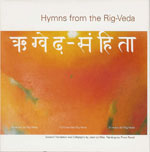 This work
includes the translation of 12 Hymns of the Rig Veda from
Sanskrit into English, French, German, and Spanish. The
English translation was previously published by Alfred
Knopf in the US and Jonathan Cape in the UK in 1975. I
have translated the English and French versions from the
Sanskrit. Both English and French renderings are metrical,
i.e. they very closely follow the syllabic meter of the
original. Mr. Volker Stutzer prepared the German version
based on my English version and Dr. Gerardo del Cerro did
the same for the Spanish version.
This work
includes the translation of 12 Hymns of the Rig Veda from
Sanskrit into English, French, German, and Spanish. The
English translation was previously published by Alfred
Knopf in the US and Jonathan Cape in the UK in 1975. I
have translated the English and French versions from the
Sanskrit. Both English and French renderings are metrical,
i.e. they very closely follow the syllabic meter of the
original. Mr. Volker Stutzer prepared the German version
based on my English version and Dr. Gerardo del Cerro did
the same for the Spanish version.
The choice of the Hymns was dictated partly by their relative importance to later developments of the speculative and philosophical thought of India—hence the predominance of the Hymns of the tenth Mandala—partly on the obligation to present some typical Hymns addressed to the most-often celebrated gods of the brahmanical pantheon—Agni, Soma, and Indra—and partly on the desire to show the wide range of tone and the variety of style of the ancient poets.
In this selection the Hymns have been arranged in a natural sequence to make for connected reading, beginning with the Hymns of Creation and proceeding through the "nature" Hymns to the Dawn and the Sun to the Hymns related to more abstract principles such as Knowledge and the Word, and concluding with the last Hymn of the Samhita, an invitation to peace and harmony.
Each Hymn, presented in Sanskrit calligraphy, is given in parallel translation in English, French, German, and Spanish and so are all the texts and notes. The limited hard-cover edition includes the color reproduction of twenty-four original paintings by Indian artist Prem Raval directly inspired from the Hymns themselves. These paintings formed part of an exhibition that took place in Germany at the Ministry of Social Affairs in Munich, Bavaria and in India at Ahmadabad in 2002.
The use of appropriate illustrations such as nature photographs in the Knopf edition or original paintings inspired by my translation as in the present volume contributes to the Lectio Divina mode of reading familiar to monastics. In other words, my translation aims more at an opening of the heart and a quiet illumination of the spirit than either a dazzling of the mind or being a thesaurus of information.
I am not aware of any similar presentation of the Hymns
in English or other languages and that is why I thought
French, German, and Spanish versions based on my English
rendering would be useful, since that would make the Hymns
accessible to readers virtually through the whole of the
Americas except Brazil, and through most of western Europe
besides the English-speaking world.
Interestingly the initial publication by Knopf in this country and Jonathan Cape in England had a large diffusion in India, from where I received many letters of thanks from pandits. The entire text of the translation was, in fact, presented in a 1980 program of the Atmagnana Jyothi Sabha in Bombay under the patronage of the Shankaracharya of Kanchipuram and the Shankaracharya of Dwaraka, among the highest religious authorities in India.
A number of the translations have also been selected for inclusion in various anthologies, viz...
· Goddesses by Jalaya Bonheim (Stewart, Tabori, and Chang, 1997)
· The World of Literature by Louise Westling (Simon & Schuster, 1999)
· A Treasury of Sanskrit Poetry by Shri A.N.D. Haksar (Indian Council for Cultural Relations Publications, 2001)
· Being, Consciousness, Bliss: A Seeker's Guide by Astrid Fitzgerald (Lindesfarne Books, 2001)
· "Hymns from Eternity," (International Yoga Magazine, May 2002), feature article
The following note on the Translators and the Painter gives short bios of the participants in the project.
Volker Stutzer was born on the 9th of December 1927 in Untergriesbach near Passau in Bavaria. From 1938-1948 he was a student at the classical grammar schools in Passau and Deggendorf. His education was interrupted by his service in the German army. As a paratrooper he took part in battles on the eastern front, where he was wounded and taken prisoner. After release from captivity he worked in the Federal German Customs Service as a managing officer. In 1963 he became editor of a large daily newspaper. In 1979 he was decorated with the Distinguished Service Cross (Bundesverdienstkreuz), in 1982 he received the Theodor Wolff Prize for outstanding journalism and in 1989 his home town of Untergriesbach made him an honorary citizen. He has written a number of stories and books about local history. Married since 1952, he has one daughter.
Gerardo del Cerro holds a doctorate from the New School for Social Research in New York, where he specialized in political economy. He holds a B.A. in Philosophy and Masters in classical piano and sociology. At age twenty three, he vas appointed Visiting Scholar and Director of the Spanish House at Skidmore College (Saratoga Springs, New York). Between 1997 and 2002 he served as Project Area Leader for the Gateway Program of the U.S. National Science Foundation, and since 2000 he is Director of Assessment and Innovation at The Cooper Union for the Advancement of Science and Art (New York). He is the author of a book on the management of evaluation and a number of papers on social science issues. Born in Spain, Dr. del Cerro lives in New York City since 1992.
Prem Raval was born on the 11th of March, 1936 in Palanpur, Gujerat state in India. A Brahmin, he was destined to be a priest but instead followed his talent as artist draftsman and painter. The famous Indian artist Shri Amrut Van has been one of his teachers. As Prem Raval's family could not afford the expenses of his studies, he earned the money for them by whitewashing milestones and thus walked hundreds of miles through the state of Gujerat. What he saw and experienced in those months increased his interest in religion and spirituality that have formed the basis of his art. He has participated in shows in more than fifty large Indian cities as well as in the USA and Germany and received numerous awards. He is married, has a daughter and a son, himself a painter.
Write up presented on left flap of the limited hard-cover edition; back, on the paperback edition
The Rig-Veda, core of the Hindu scriptural canon, is a collection of over a thousand hymns; above all it is a glorious song of praise to the gods, the cosmic powers at work in nature and in man.
The presentation of the twelve hymns in this book makes available a portion of one of the major scriptures of humanity in contemporary idioms (English, French, German, and Spanish) that reflect the quality, substance, and form of the original.
A stunning collection of twenty-six full-color reproductions of paintings by the renowned Indian painter Prem Raval inspired by this translation forms an integral part of the presentation and adds to it a new dimension.
Le Rig-Véda, coeur du canon scriptural hindou, est une collection de plus d'un millier d'hymnes; avant tout c'est un noble chant à la gloire des dieux, les puissances cosmiques qui s'exercent au sein de la nature et de l'homme.
Les douze hymnes présentés ici offrent un florilège d'une des Ecritures majeures de l'humanité dans des idiomes contemporains (anglais, français, allemand, espagnol) qui reflètent la qualité, la substance, et la forme de l'original.
Une série de vingt-six reproductions en couleur d'étonnantes peintures par le célèbre artiste hindou Prem Raval inspiré par ces traductions, forme partie intégrale de la présentation et lui donne une dimension nouvelle.
Right flap of collector's edition; back of textbook edition
Der Rig-Veda gilt als Kernstück des Schriftenkanons der Hindukultur und ist eine Sammlung von mehr als tausend Hymnen. An ihrer Spitze stehen die Lobpreisungen der Götter, der kosmischen Kräfte, wie sie in der Natur und den Menschen wirken. In diesem Buch werden zwölf Hymnen dargeboten, die einen Teil der wichtigsten Schriften humanitärer Tradition in zeitgenössischen Sprachen (Englisch, Französisch, Deutsch und Spanisch) zugänglich machen. Sie entsprechen der Qualität, dem Inhalt und der Form des Originals.
Eine bemerkenswerte Sammlung von sechsundzwanzig farbigen Reproduktionen von Bildern des bekannten indischen Malers Prem Raval, der sich von den übertragungen inspiriert fühlte, bildet einen integralen Teil des Buches und fügt den übersetzungen eine neue Dimension hinzu.
El Rig-Veda, núcleo del canon de las escrituras hindues, es una colección de más de mil himnos. Ante todo es un noble canto a la gloria de los dioses, los poderes cósmicos que se ejercen en el seno de la naturaleza y del hombre.
Los doce himnos aquí presentados ofrecen una selección de una de las escrituras más importantes de la humanidad en algunos idiomas contemporáneos (inglés, francés, alemán, español), reflejando la calidad, la substancia y la forma del original.
Una serie de veintiseis reproducciones en color de sorprendentes pinturas del célebre artista hindu Prem Raval, inspiradas, por las traducciones, forman parte integral de la presentación y añaden una nueva dimensión a las traducciones.
Endorsements on back of hard-cover limited edition
What Some Indian Authorities Had to Say
"A sympathetic approach required for the complete grasp
of our great Vedas."
Pandit M.R. Gopalacarya, Bombay, India
"A marvelous tribute to the ancient Indian sages."
H.M Mehta, Ahmedabad, India
"I was deeply impressed by this fine and great
work...particularly by the introduction, written in a
lucid and meditative language...The preludes to each of
the twelve hymns highlight and magnify the beauty of the
work. A marvelous production!"
Pandit N.S. Sontakke, Puna, India
Ce que disent quelques autorités hindoues
"[Cet ouvrage possède] la sympathie requise à une bonne
compréhension de nos célèbres Védas."
Pandit M.R. Gopalacarya, Bombay, India
"Un hommage merveilleux aux anciens sages de l'Inde."
H.M Mehta, Ahmedabad, India
"J'ai été profondémment frappé par ce bel et magnifique
ouvrage...particulièrement par la lucidité et le ton
méditatif de l'introduction...Le prélude à chacun des
douze hymnes rehausse et contribue à la beauté de
l'oeuvre. Un travail splendide!"
Pandit N.S. Sontakke, Puna, India
Hymns from the Rig Veda at Amazon
Studies in Indology: Prof. Rasik Vihari Joshi Felicitation Volume.
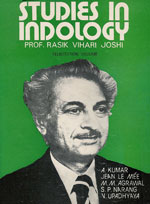 Eds:
A. Kumar, University of Delhi, Jean Le Mée, Cooper Union
for the Advancement of Science and Art, New York; M.M
Agrawal, University of Delhi, Delhi; S.P. Narang,
Pondicherry University, Pondicherry; V. Upadhyaya,
University of Delhi, South Campus, Delhi. New Delhi: Shree
Publishing House, 1988.
Eds:
A. Kumar, University of Delhi, Jean Le Mée, Cooper Union
for the Advancement of Science and Art, New York; M.M
Agrawal, University of Delhi, Delhi; S.P. Narang,
Pondicherry University, Pondicherry; V. Upadhyaya,
University of Delhi, South Campus, Delhi. New Delhi: Shree
Publishing House, 1988.
This volume contains essays on the diverse aspects of Indology by a number of eminent scholars of India and abroad to felicitate the renowned Sanskritist and Indologist, Professor Rasik Vihari Joshi, who has enriched its different branches through his brilliant writings in Sanskrit, English, French, Spanish, and Hindi.
Jean's contribution, in addition to editing, was an
article entitled "Paniniyas and Engineers" where he
describes the way engineers, through study of the
grammatical categories of the Sanskrit language, can be
led to a much more comprehensive understanding of the
problems they wish to solve.
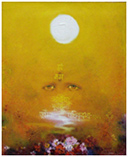

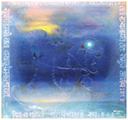
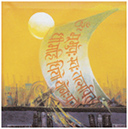

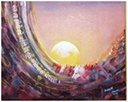 S
S